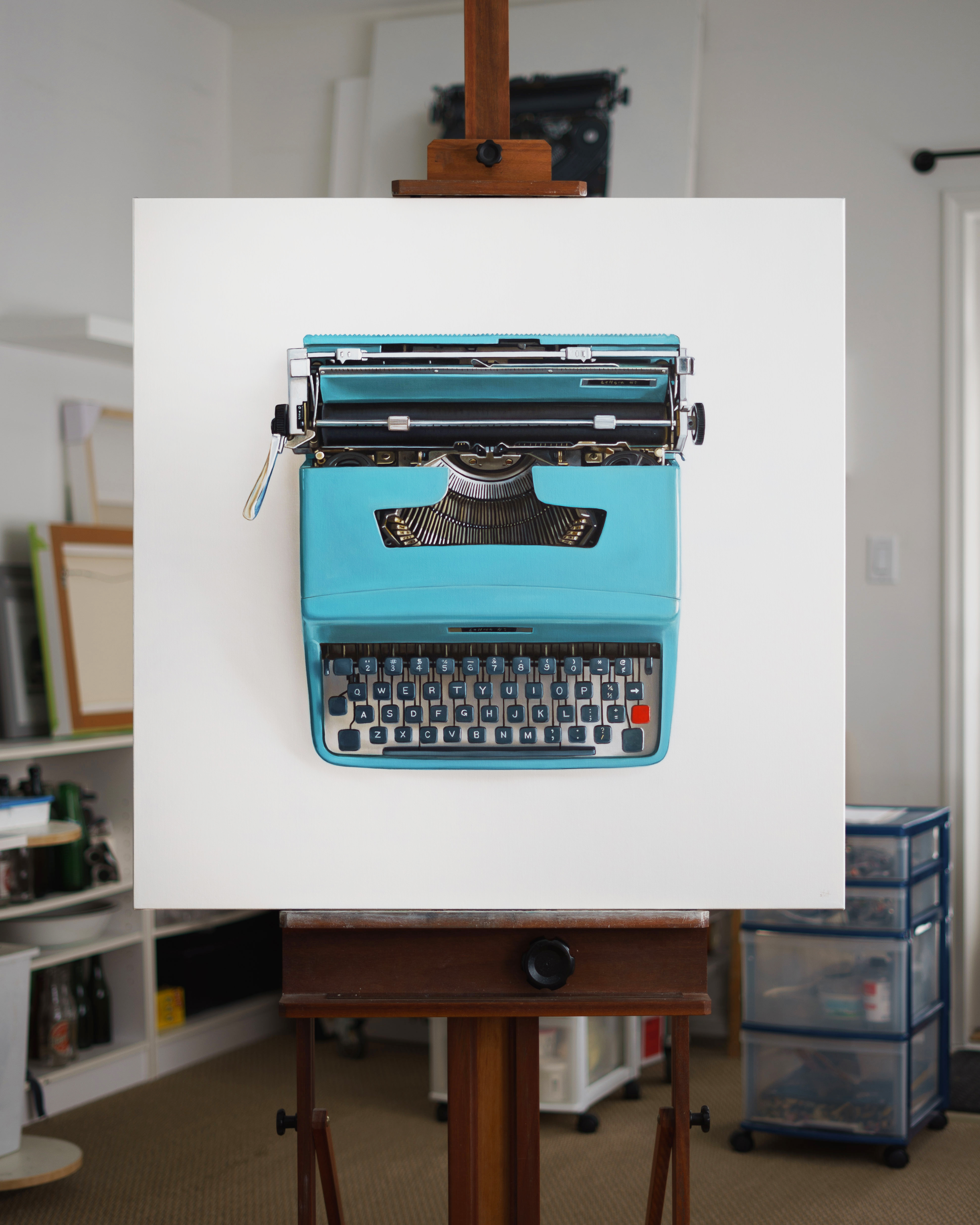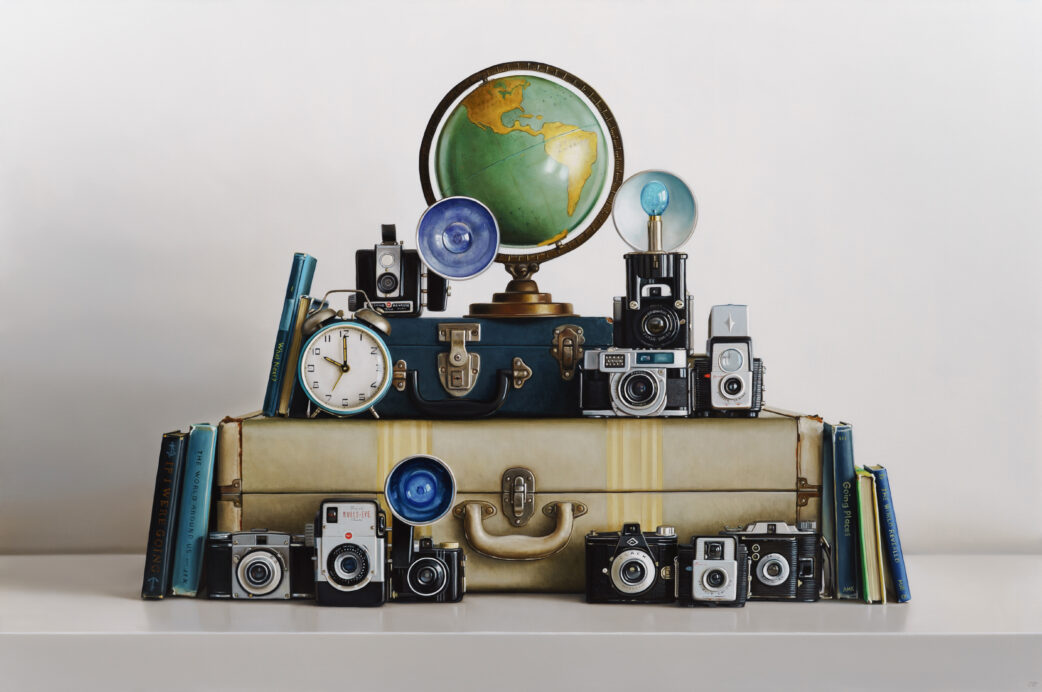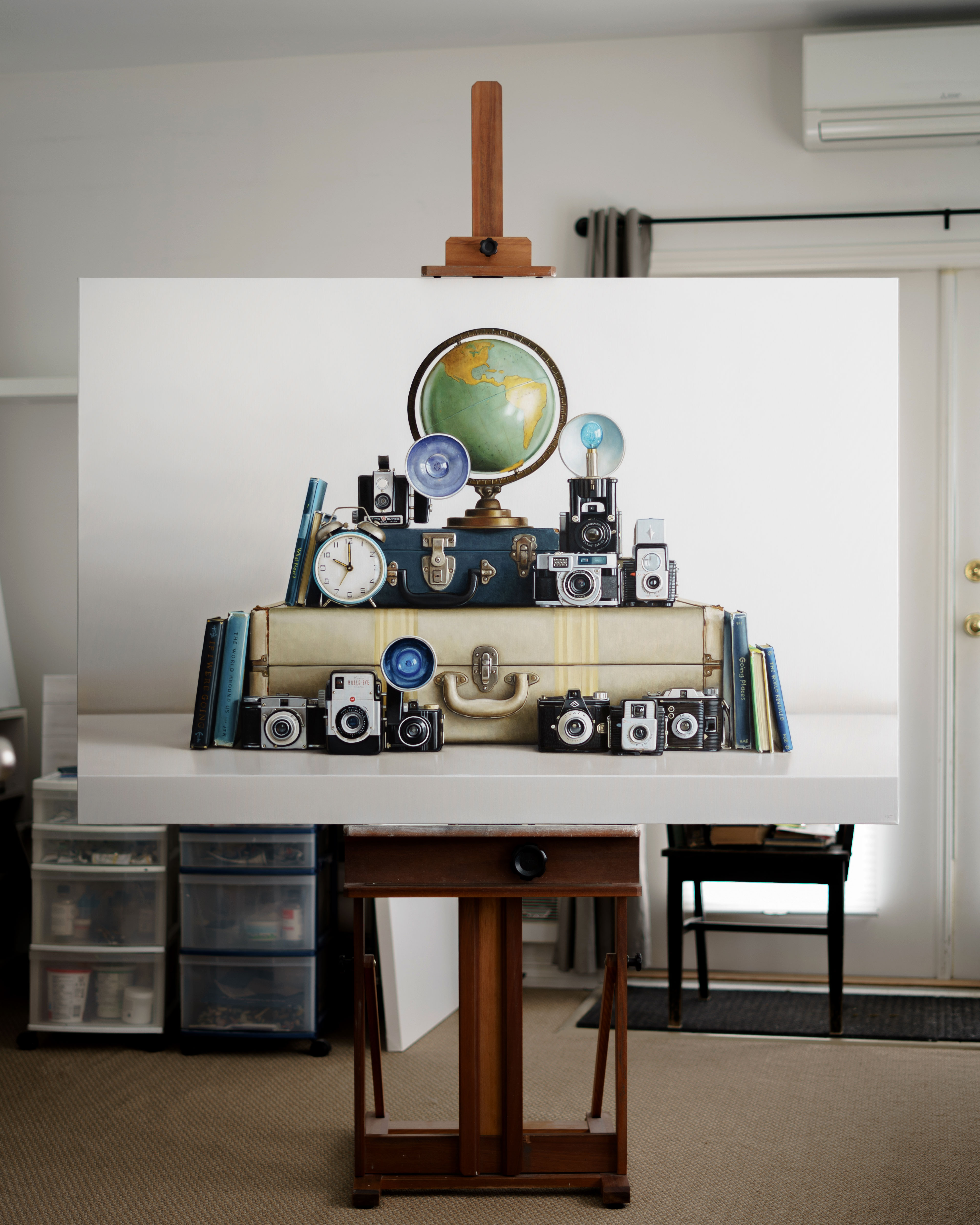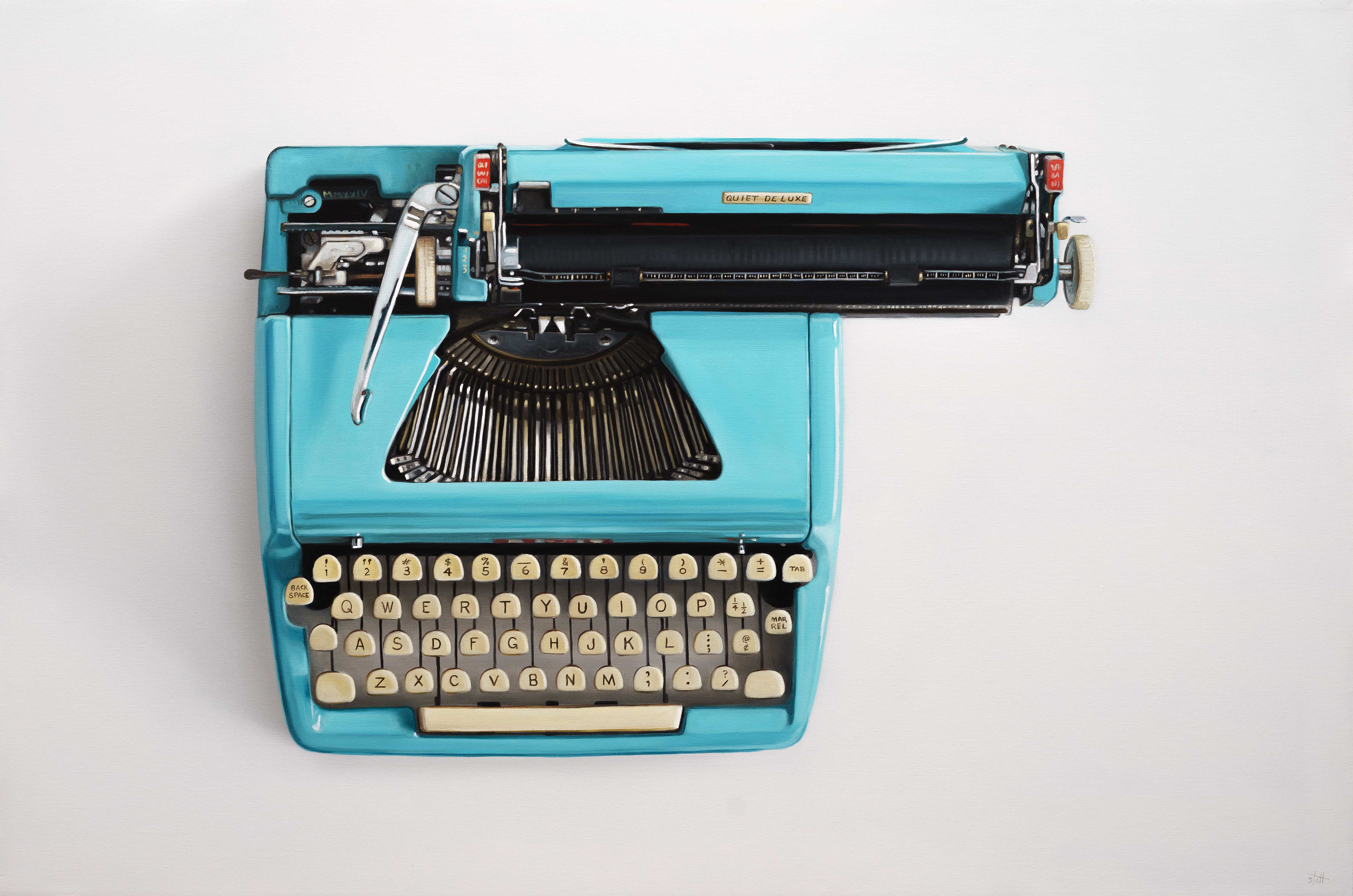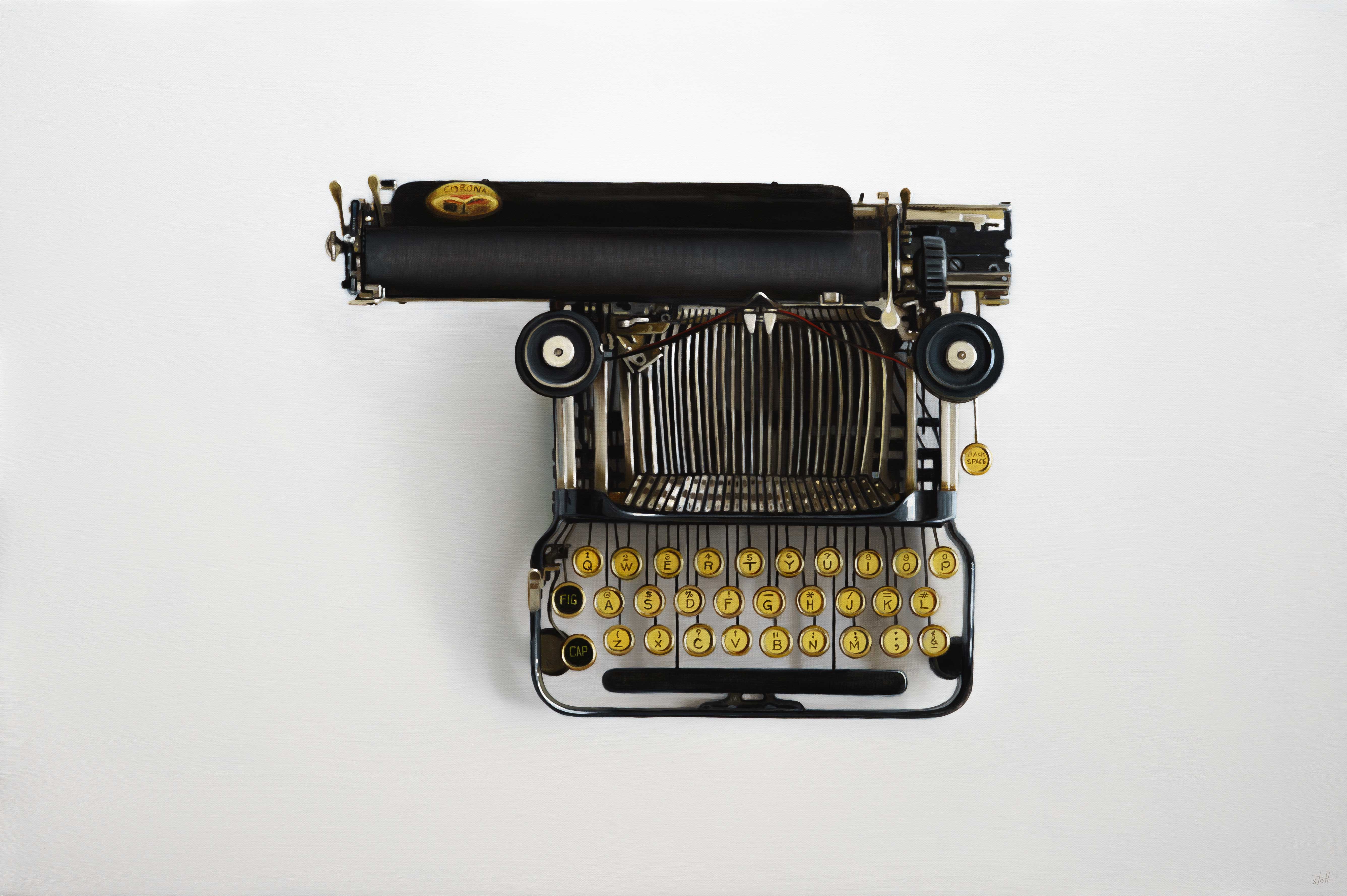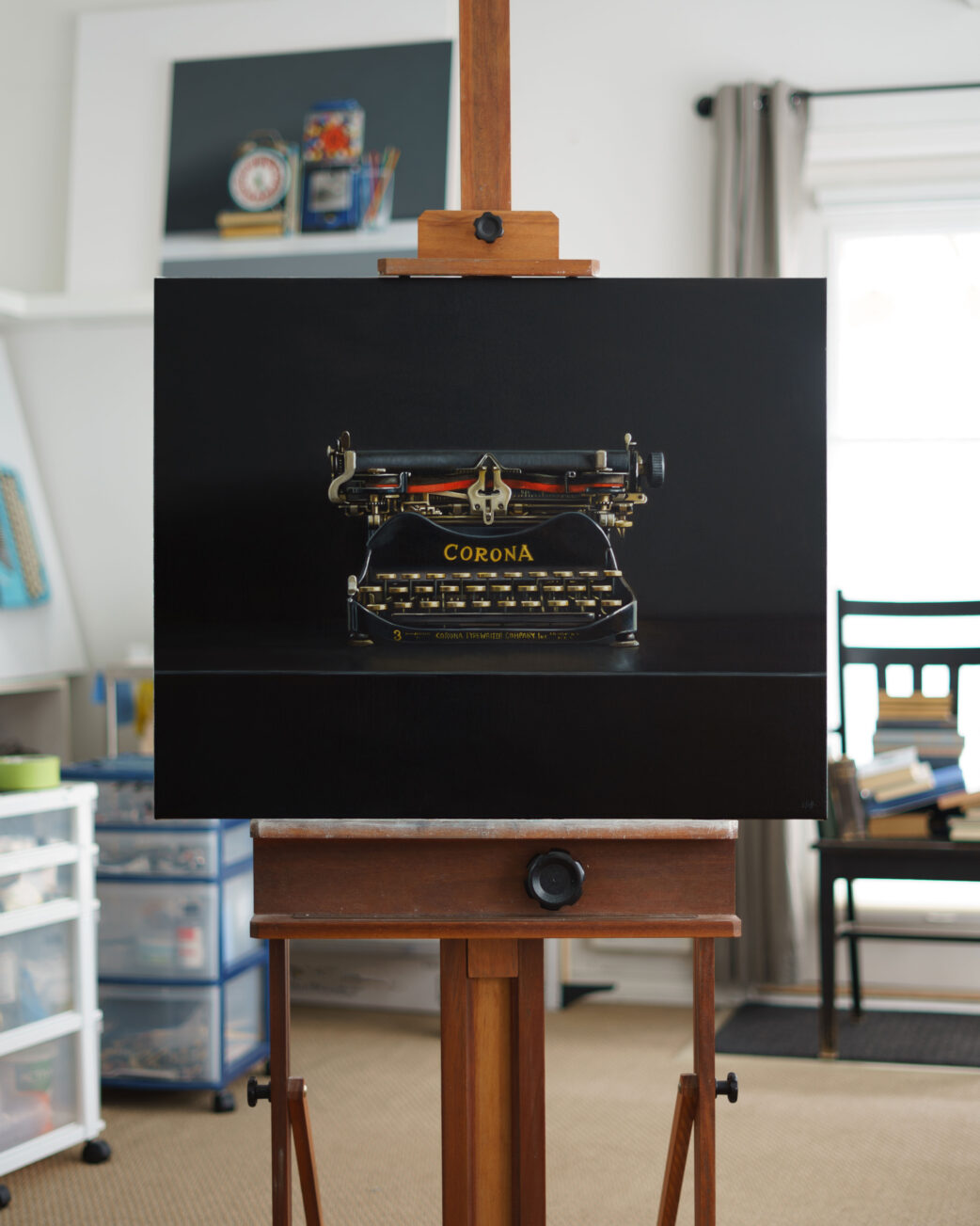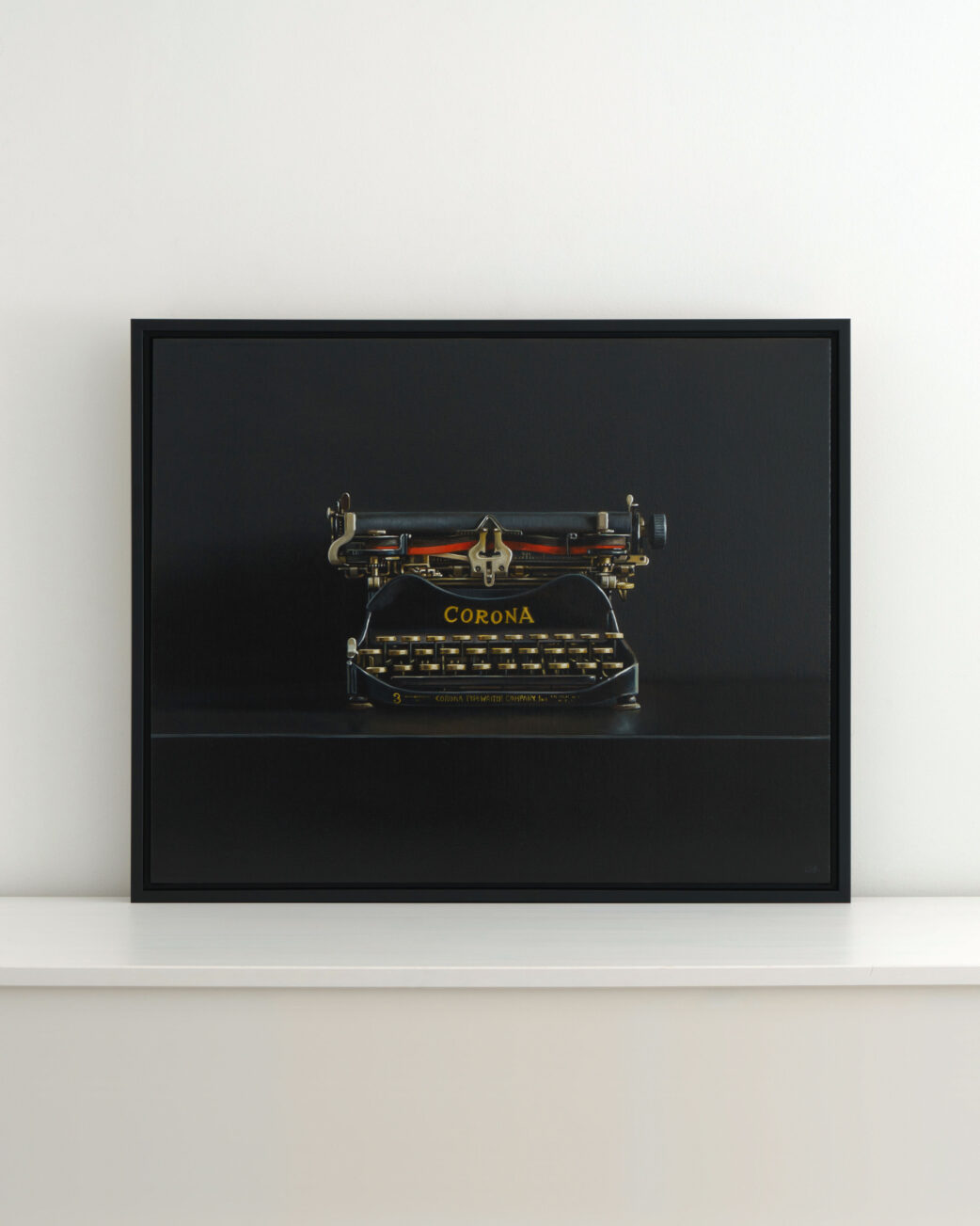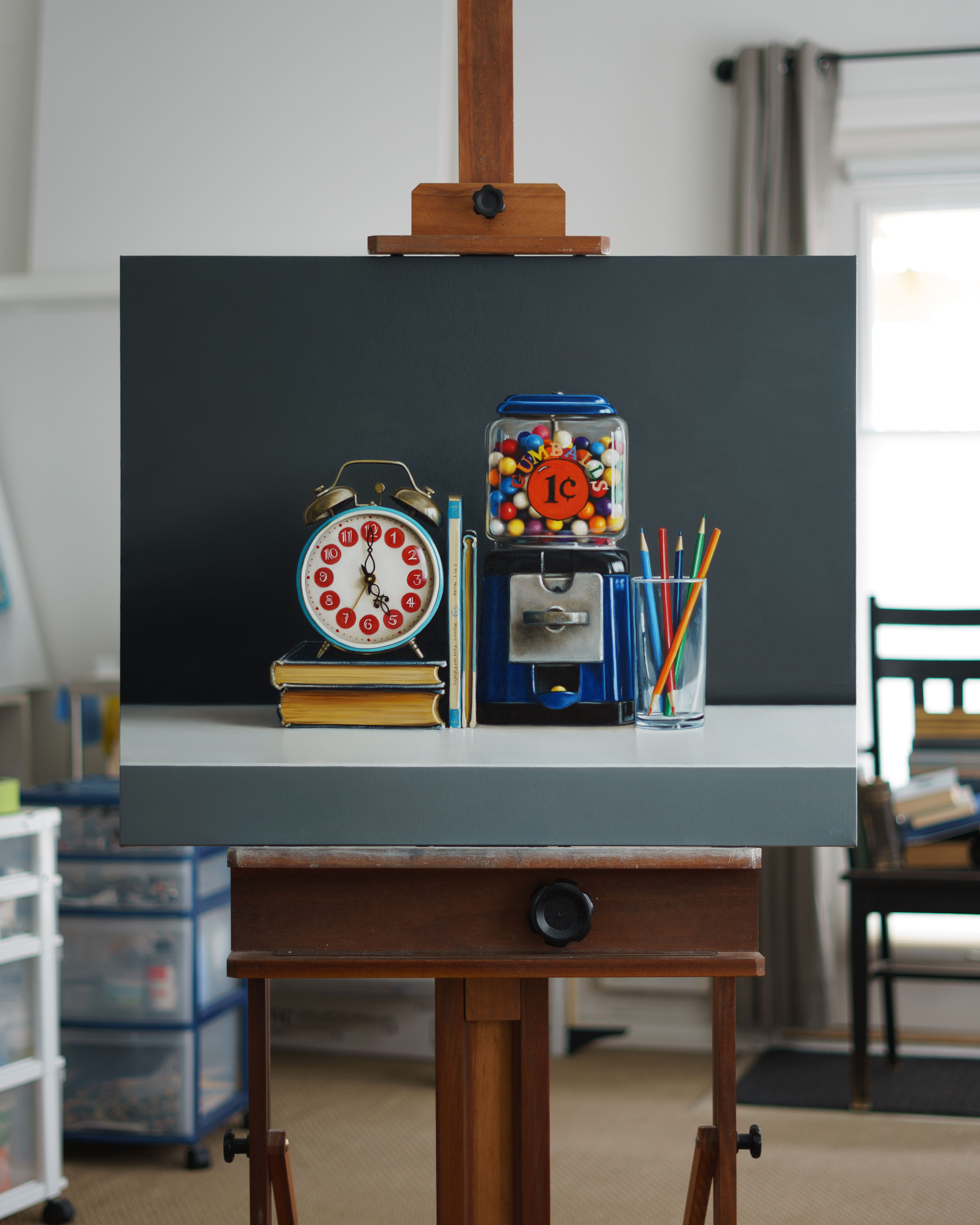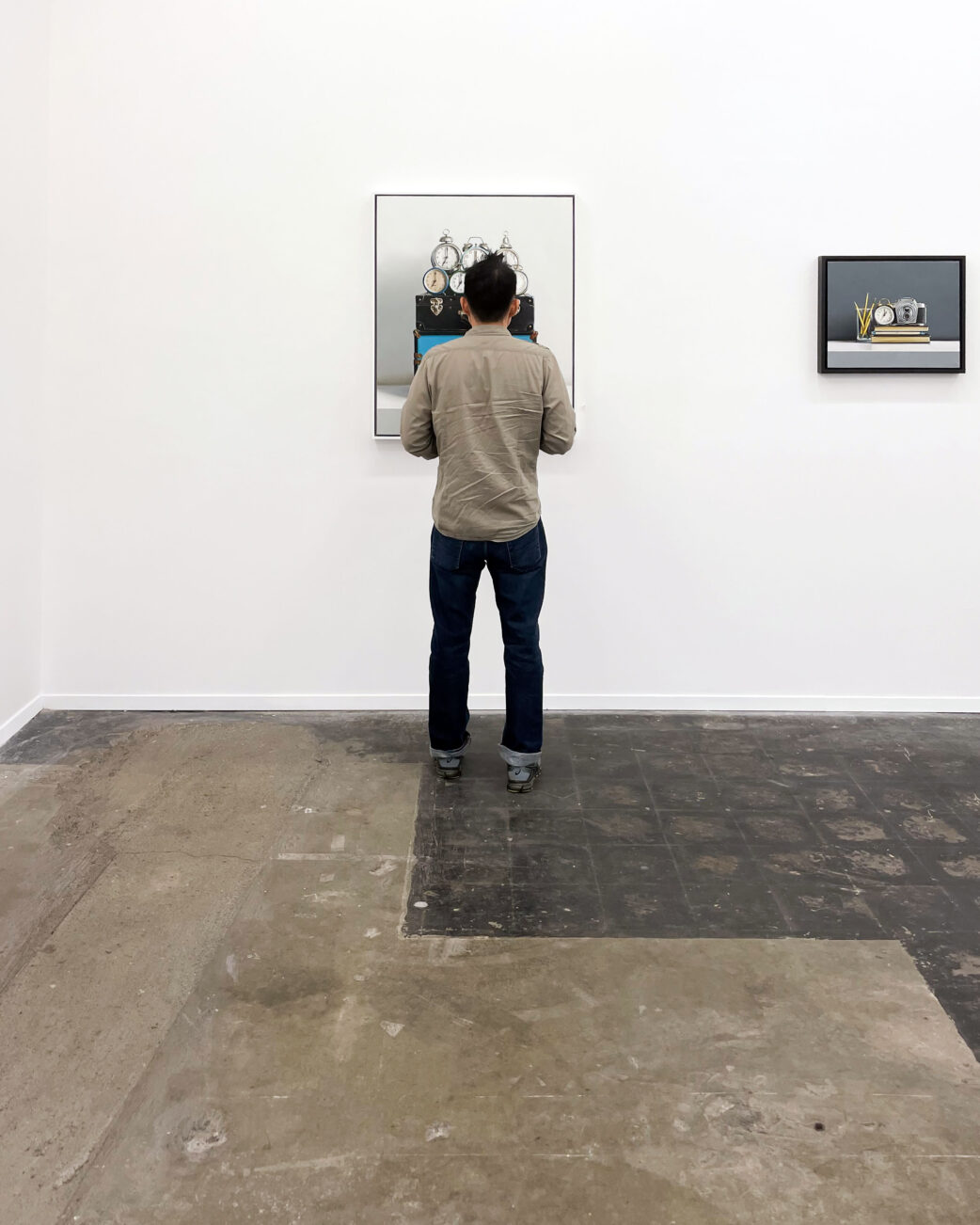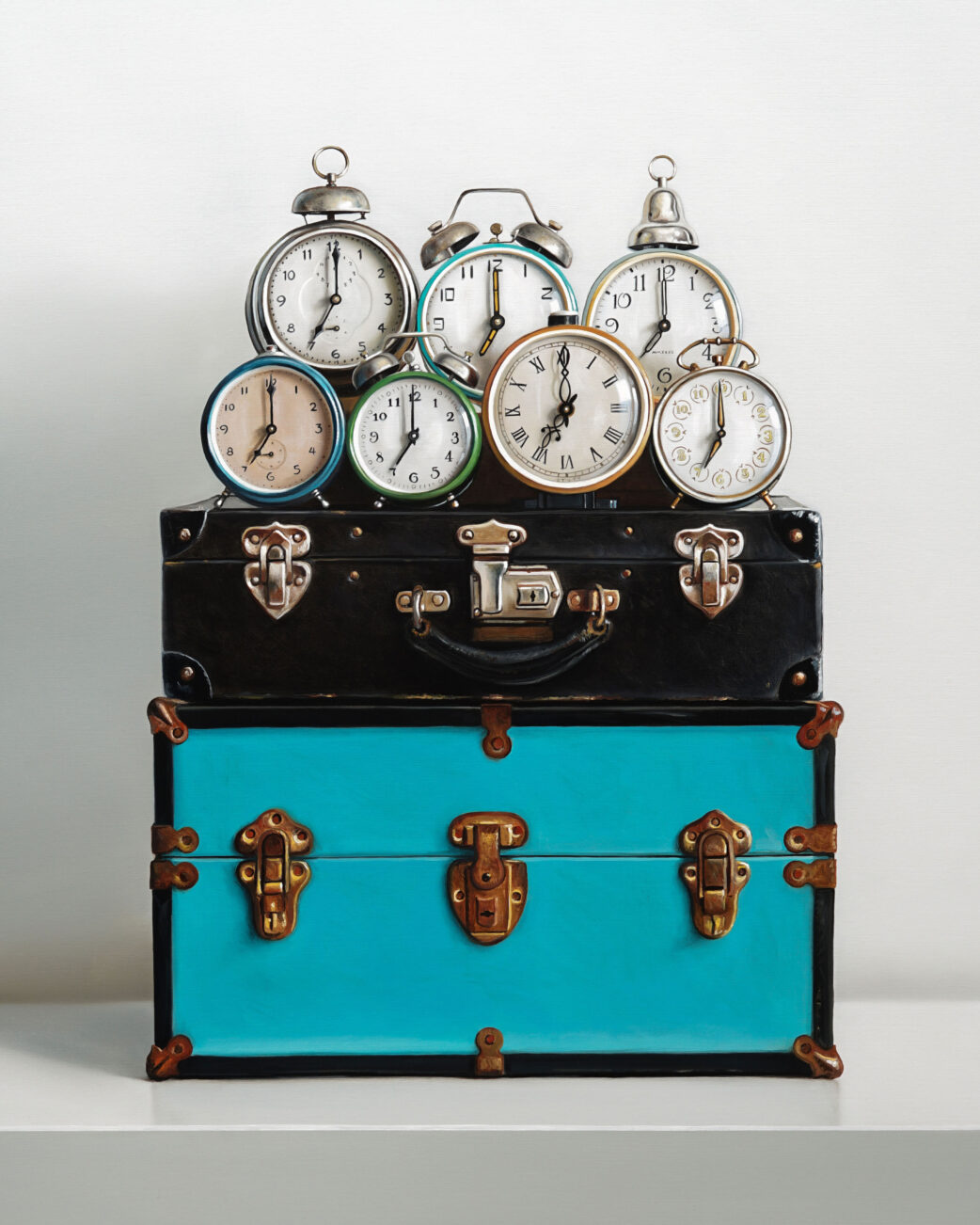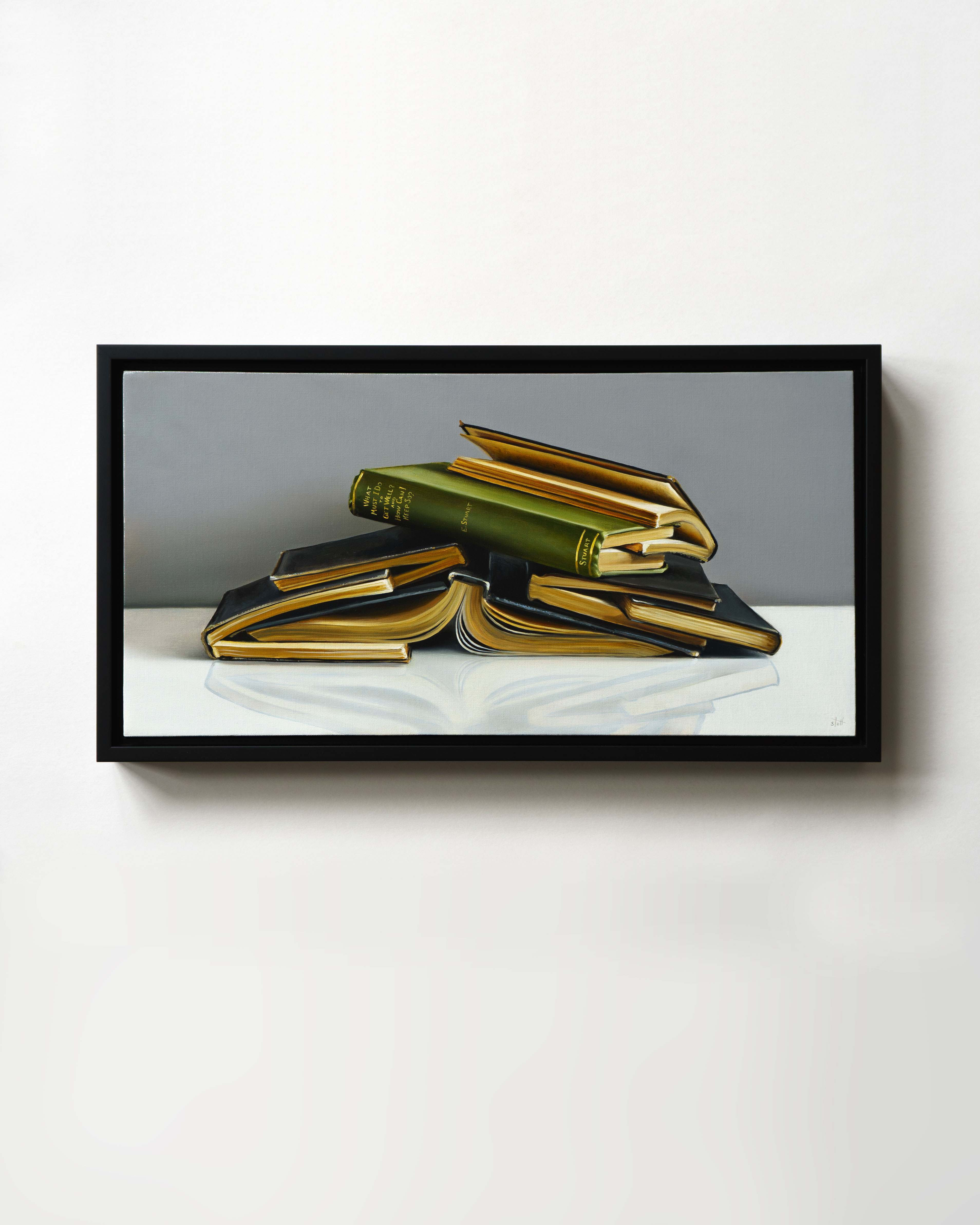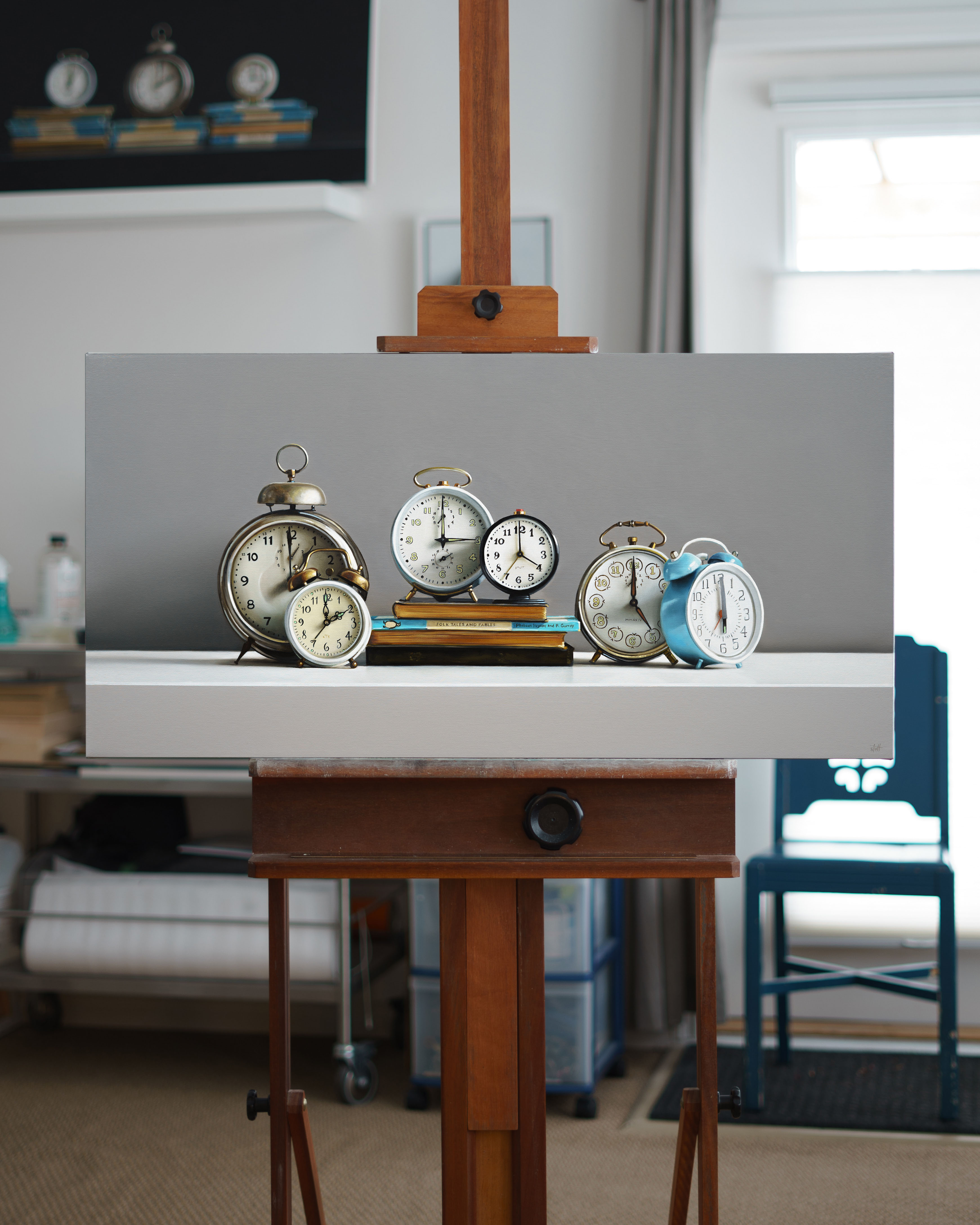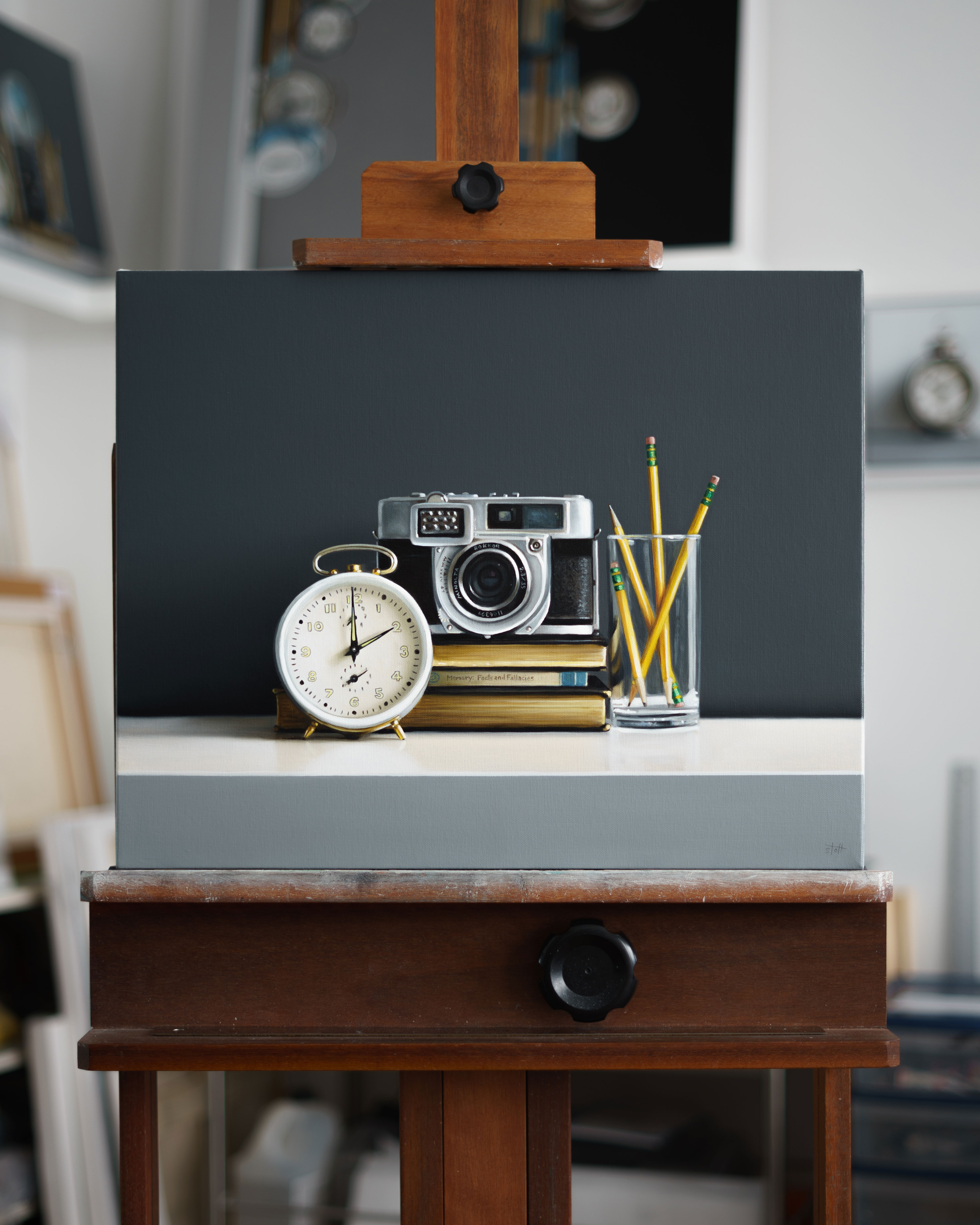My family took the dogs for a walk, and when we rounded the corner to another block, I spotted this shabby old chair on a driveway with a sign saying “FREE.” I knew I could make it work in a painting or two the second I saw it. So, I told my family to go on without me as I lugged the old chair back home.
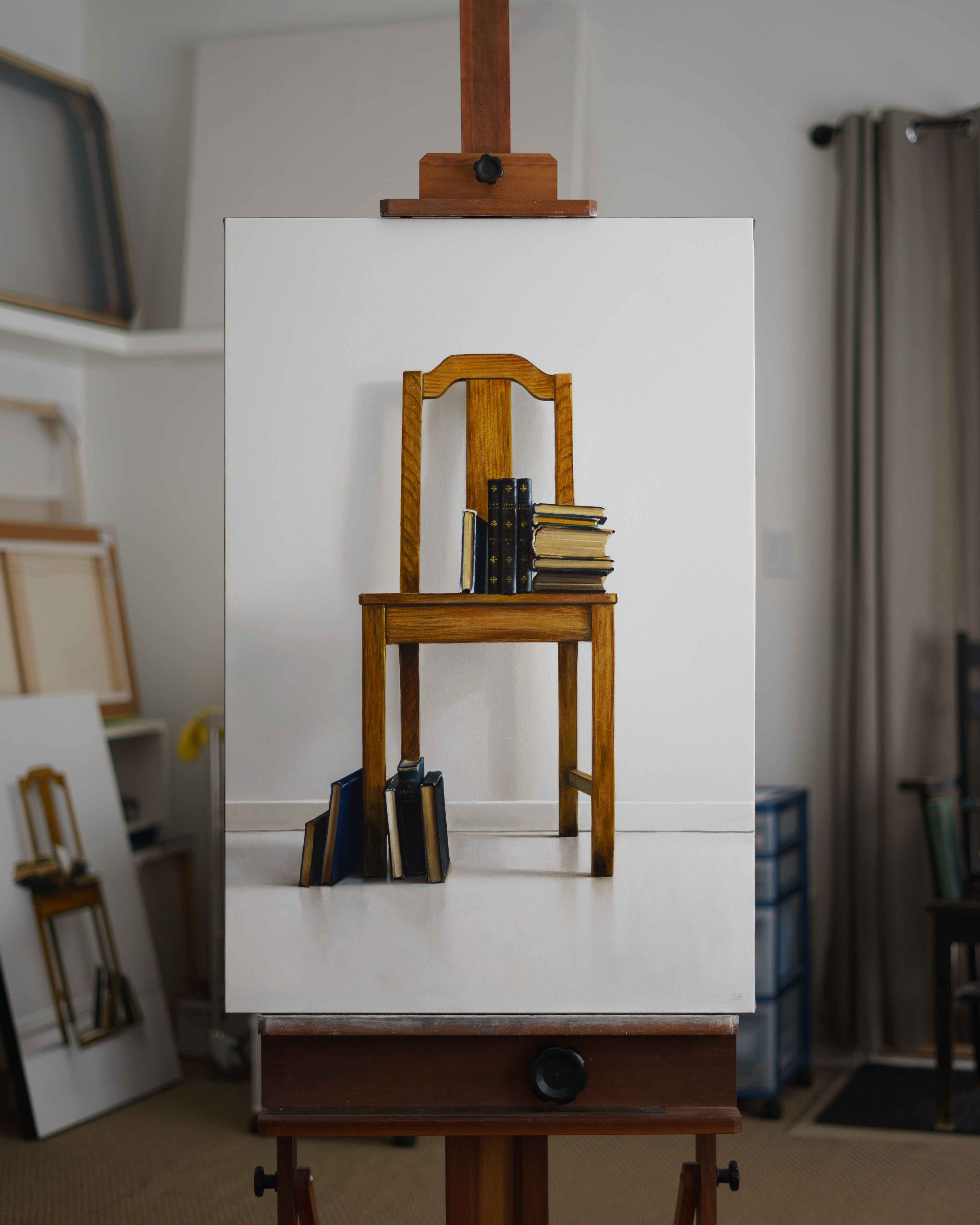
I set it up in my studio and took out several antique books. And three of them were just given to me by my brother-in-law. A set of three volumes titled “Good Society.” I like that these two paintings are comprised of found and given objects.
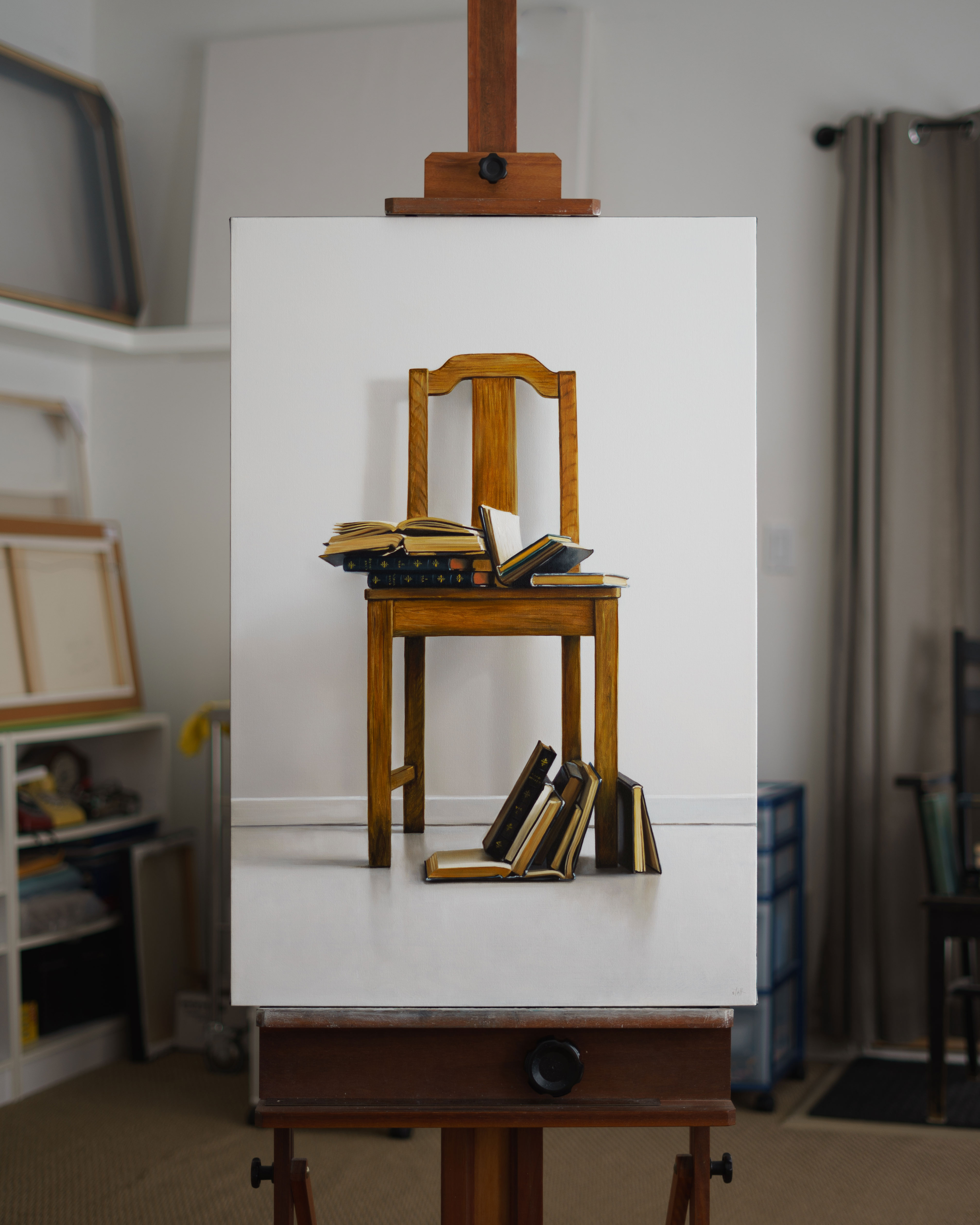
The Billis Williams Gallery will exhibit these two new paintings at the upcoming Seattle Art Fair, which will run from July 25 to 28.

